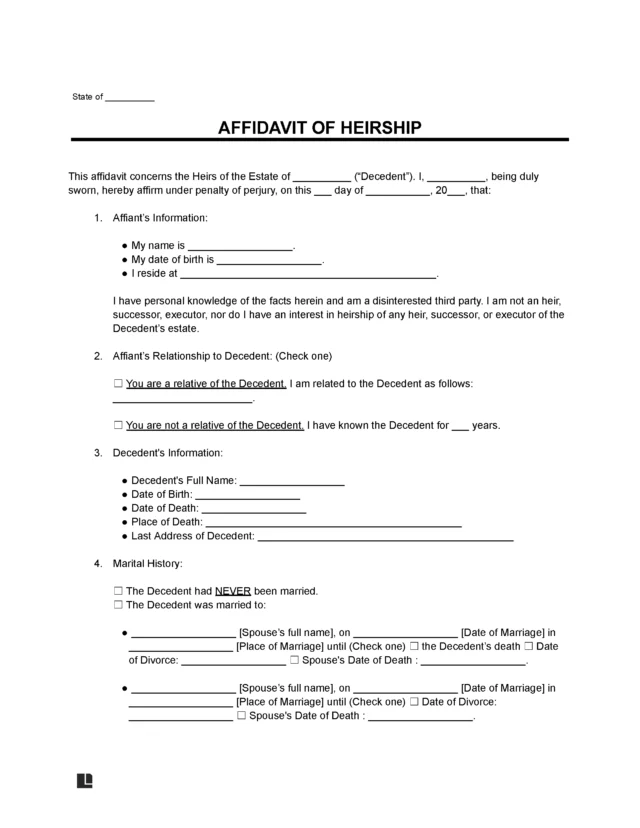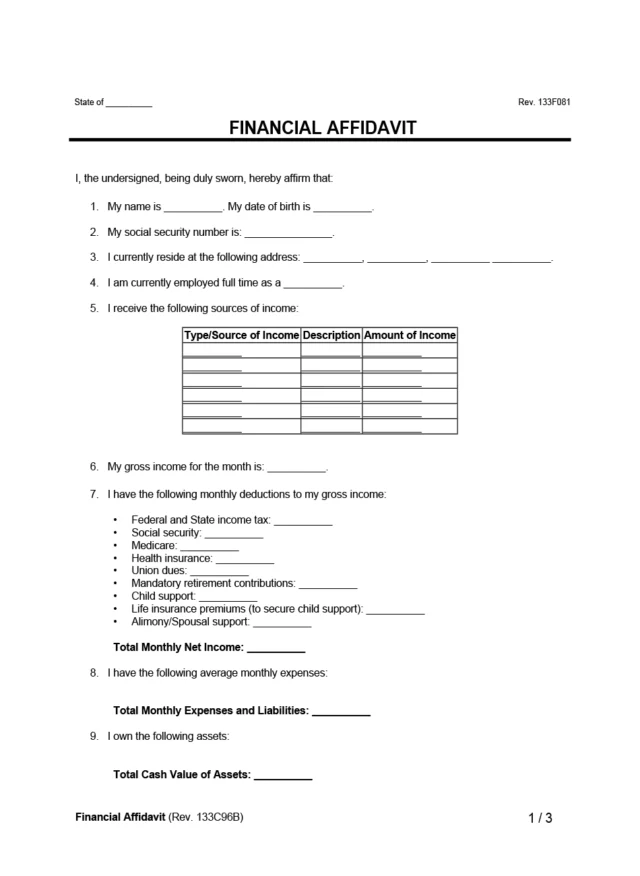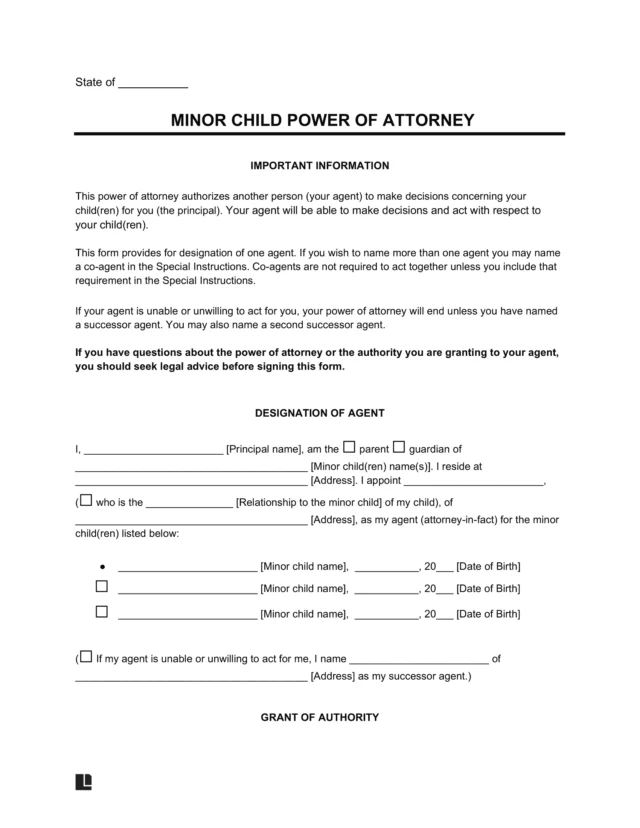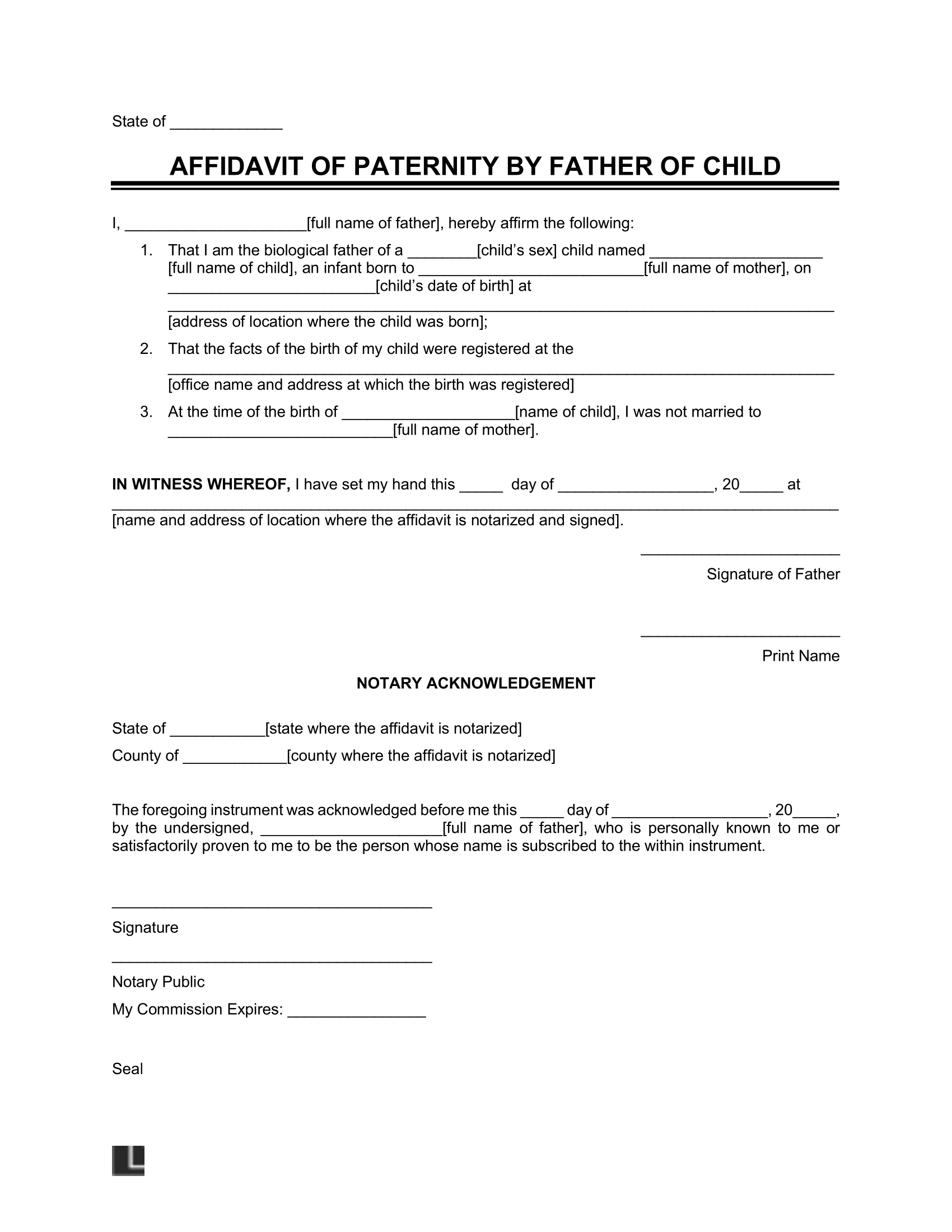What Is a Paternity Affidavit?
A paternity affidavit (or an affidavit of paternity) is a document establishing the identity of a child’s biological father. It’s meant for couples who were not married when the child was conceived or born.
Most states have the “presumption of paternity” under the Uniform Parentage Act (UPA). This means a husband is presumed to be the father of a child conceived during the marriage. Many states also assume that a child belongs to the husband if the marriage ended within a specific period before the birth (commonly 300 days). However, these principles don’t apply to unmarried couples. Unmarried couples can use an affidavit of paternity to establish legal fatherhood.
Is the Uniform Parentage Act Universal?
Many states have adopted the UPA, but it’s not universal. Your state may not have adopted all its parts or may have variations, so it’s important to check your state’s laws.
The biological father can sign the affidavit of paternity at any time. It’s typically signed at the hospital when the child is born, but they can also sign it at a child support enforcement agency or a paternity registry.
Benefits of an Affidavit of Paternity
An affidavit of paternity allows the father to be added to their child’s birth certificate. It grants them legal and financial responsibility for their child, and allows their child to have access to the father’s:
- Health insurance
- Inheritance
- Social Security benefits
- Veteran’s benefits
Once the father signs the affidavit, he can also seek custody or visitation rights. For the mother, the affidavit makes it easier to establish the father’s duty to provide child support. Also, this document gives the child a clear legal connection to both parents, which can provide long-term emotional and financial security.
How to Write an Affidavit of Paternity
An affidavit of paternity identifies a man as the biological father of a child. Follow these steps to create your sworn statement.
Step 1 – Add Parents’ Names
Write the full legal names of the biological mother and father. An affidavit of paternity is only meant for the biological parents to complete. If you aren’t the biological father, you must follow different procedures. Depending on your situation, you may need to go through adoption proceedings or step-parent legal arrangements.
Step 2 – List the Child’s Information
Provide information about the child to clarify for whom you’re establishing legal fatherhood. Include these details about the child:
- Full birth name
- Sex
- Date of birth
- Address of birth
Step 3 – Give the Birth Registration Details
The details of your child’s birth should be registered at the vital statistics register in your child’s county and state. Provide these details on your affidavit, including the name and address of the office.
Step 4 – Affirm Paternity & Unmarried Status
State that you are the child’s biological father and confirm that you were not married to their mother at the time of their birth. Only make these statements if they are true, as lying can lead to claims of paternity fraud and perjury.
Depending on your state, the consequences of lying can be greater than those of others. For example, knowingly making false statements about paternity in New Hampshire will make you guilty of a Class B felony.
Step 5 – Sign & Notarize
As the father, you must sign the paternity affidavit before a notary public. A notary public will confirm your identity as the signer and affirm the document’s truthfulness.
Whichever state this affidavit is notarized in determines how it’s interpreted in the event of a dispute. If any legal matters arise from this affidavit, signees may be required to go to court in the county where the document was notarized.
Witness Requirements
Your state may allow two witnesses to replace the notary acknowledgment requirement. Review the rules in your area to ensure compliance.
Step 6 – File with the Appropriate Body
Once you fill out the paternity affidavit and meet the signing requirements, you must file it with the appropriate agency. In most states, this is the Office of Vital Records (or Vital Statistics), which maintains birth certificates. Some states also allow or require filing through other agencies, such as:
- State or local courts
- Local health departments
- Child or family services offices
- Paternity registries
Always check your state’s specific procedures to ensure proper filing.
Affidavit of Acknowledgement of Paternity Sample
Below, you can view a free affidavit of acknowledgment of paternity sample to understand its structure. Complete your own using our guided form and download it as a PDF or Word document.
Can an Affidavit of Paternity Be Revoked?
You can revoke an affidavit of paternity, but the revocation must often occur within a certain period. A standard revocation period in many states is within 60 days, but you must check your state’s rules.
If you desire to revoke the affidavit after the revocation period, you may have to go through legal proceedings to get it revoked. A court order is typically needed after 60 days, and it must prove fraud, coercion, or a material mistake of fact when signing.









